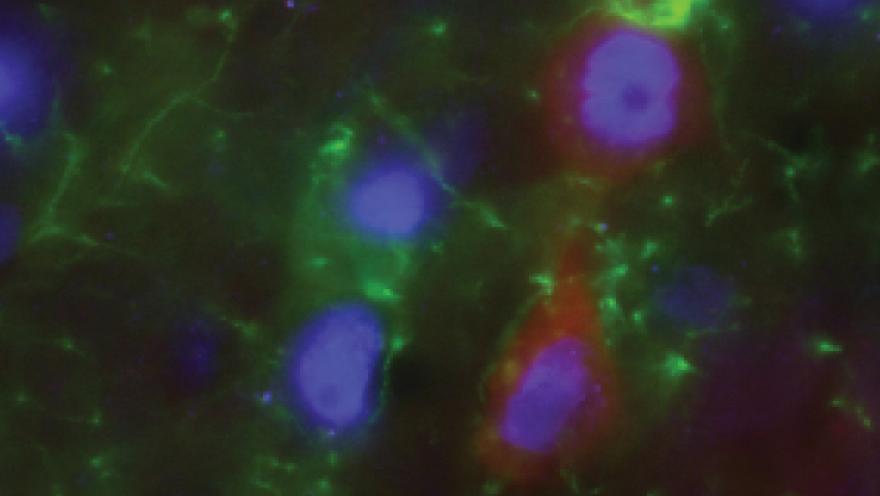Researchers at Cedars-Sinai in Los Angeles, funded by The ALS Association with ALS Ice Bucket Challenge donations, are dedicated to finding unique avenues for treating ALS. Using animal models, they transplanted specially engineered neural cells into the motor cortex of the brain, the area responsible for muscle movement.
They found that the transplanted cells protected motor neurons (the cells that die in ALS), delayed disease progression, and extended survival in animal models.
The brain’s motor cortex represents an important target and largely unexplored area of ALS research. In ALS, both the upper motor neurons, located in the motor cortex, and the lower motor neurons, which connect the spinal cord to muscles, are impacted by ALS.
In ALS, motor neurons die, losing connections to muscles and eventually causing the paralysis observed in people with ALS. Here, the researchers, led by Drs. Gretchen Thomsen and Clive Svendsen at the Cedars-Sinai Board of Governors Regenerative Medicine Institute, focused on the motor cortex.
The neural cells they transplanted into the motor cortex secrete a powerful growth factor, called GDNF, which is known to sustain glial cells, the cells that support the body’s motor neurons.
Importantly, this research shows for the first time that the transplanted neural cells survived, matured into astrocytes, a type of glial cell, and successfully released GDNF in the brain – all significant research accomplishments.
In rats, the transplanted cells in the cortex protected both upper and lower motor neurons, delayed disease progression, and extended the rats’ survival. In addition, Drs. Thomsen and Svendsen validated their results in the macaques monkey, which showed robust GDNF in the cortex without adverse effects.
Together, this demonstrates that this novel approach to treating ALS could be a promising therapeutic strategy in people living with ALS.
“This clearly effective approach of treating the brain with these cells in laboratory rats is a promising step in the right direction for ALS patients," said Thomsen. "We are very grateful for the support of The ALS Association. We hope this work highlights that the donations provided by those who took part in the ALS Ice Bucket Challenge have been extremely impactful in the ALS research field.”
Additional studies, necessary to determine which treatment levels may be adequate and safe for people living with ALS, are currently underway. These additional studies, if successful, could lead to the creation of ALS clinical trial designs, Thomsen said.
“This is extremely important and exciting work, highlighting the possibility of restoring upper motor neuron damage, a key component of the disease. The ALS Association is pleased to have supported this innovative work,” stated Dr. Lucie Bruijn, chief scientist of The ALS Association.
A clinical trial is currently ongoing at Cedars-Sinai that The ALS Association supported in its preclinical stages. This trial transplants similarly reprogrammed neural cells that secrete GDNF into the spinal cords of people with ALS. Read more about the trial here and how to enroll here.
Read the Cedars-Sinai press release here for more information.
Open Access Paper:
Gretchen M. Thomsen, et al. Transplantation of Neural Progenitor Cells Expressing Glial Cell Line-Derived Neurotrophic Factor into the Motor Cortex as a Strategy to Treat Amyotrophic Lateral Sclerosis. Stem Cells. Published online: April 15, 2018. https://doi.org/10.1002/stem.2825


Join the conversation. Please comment below.